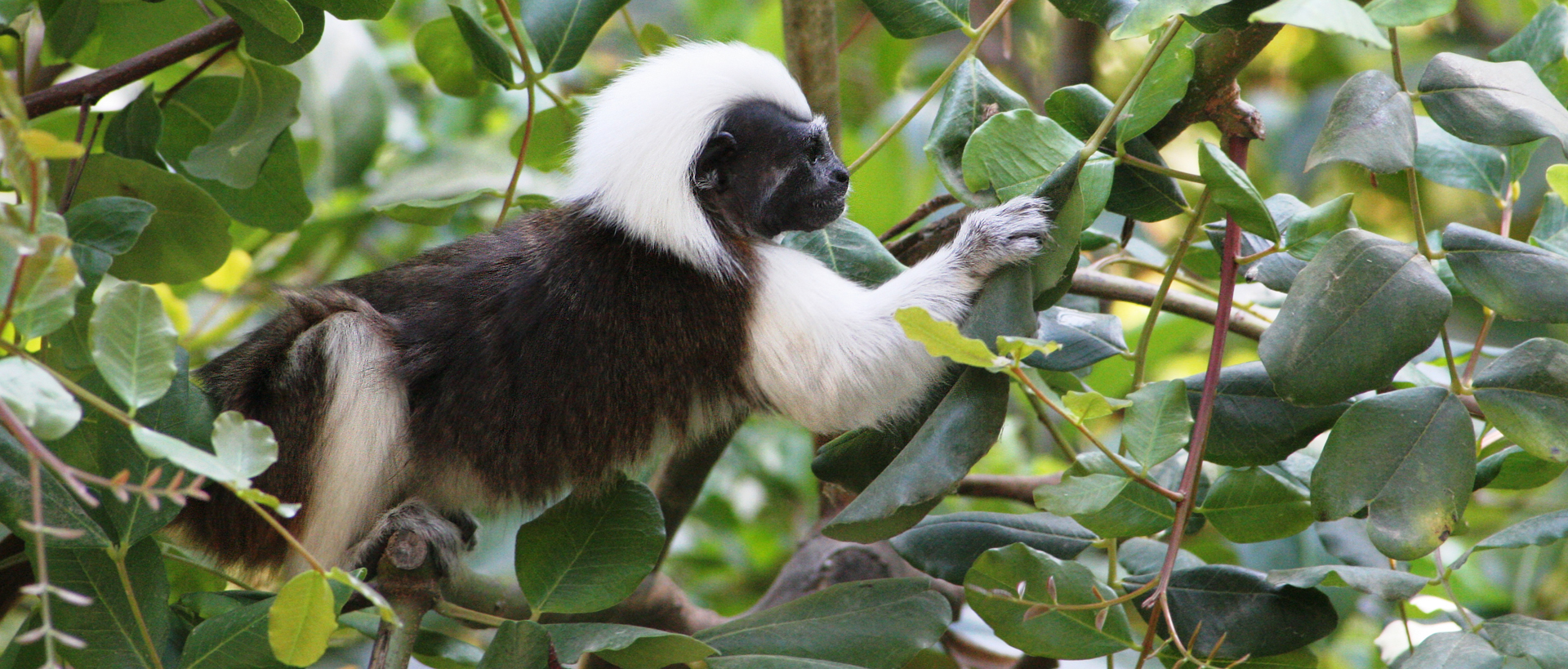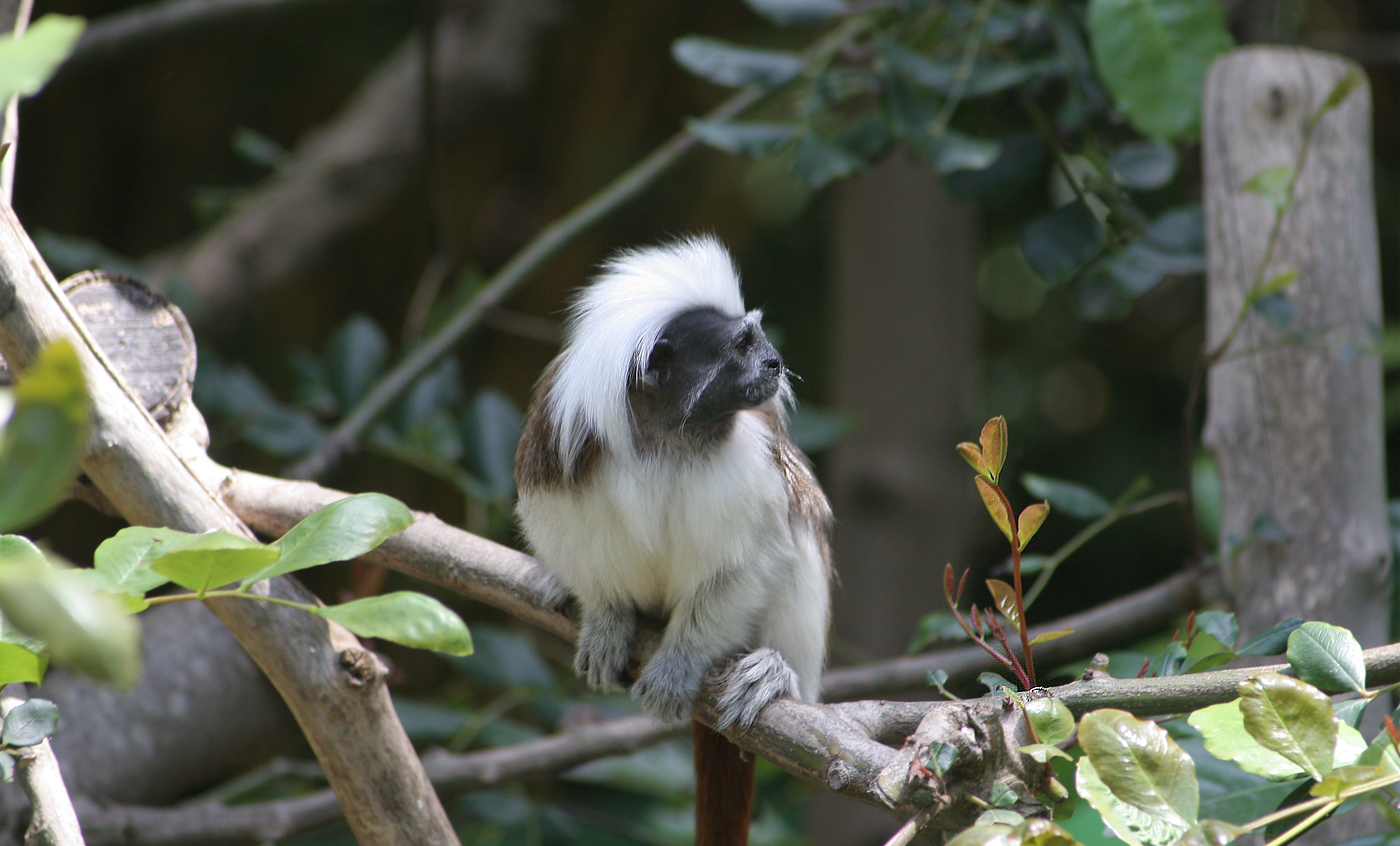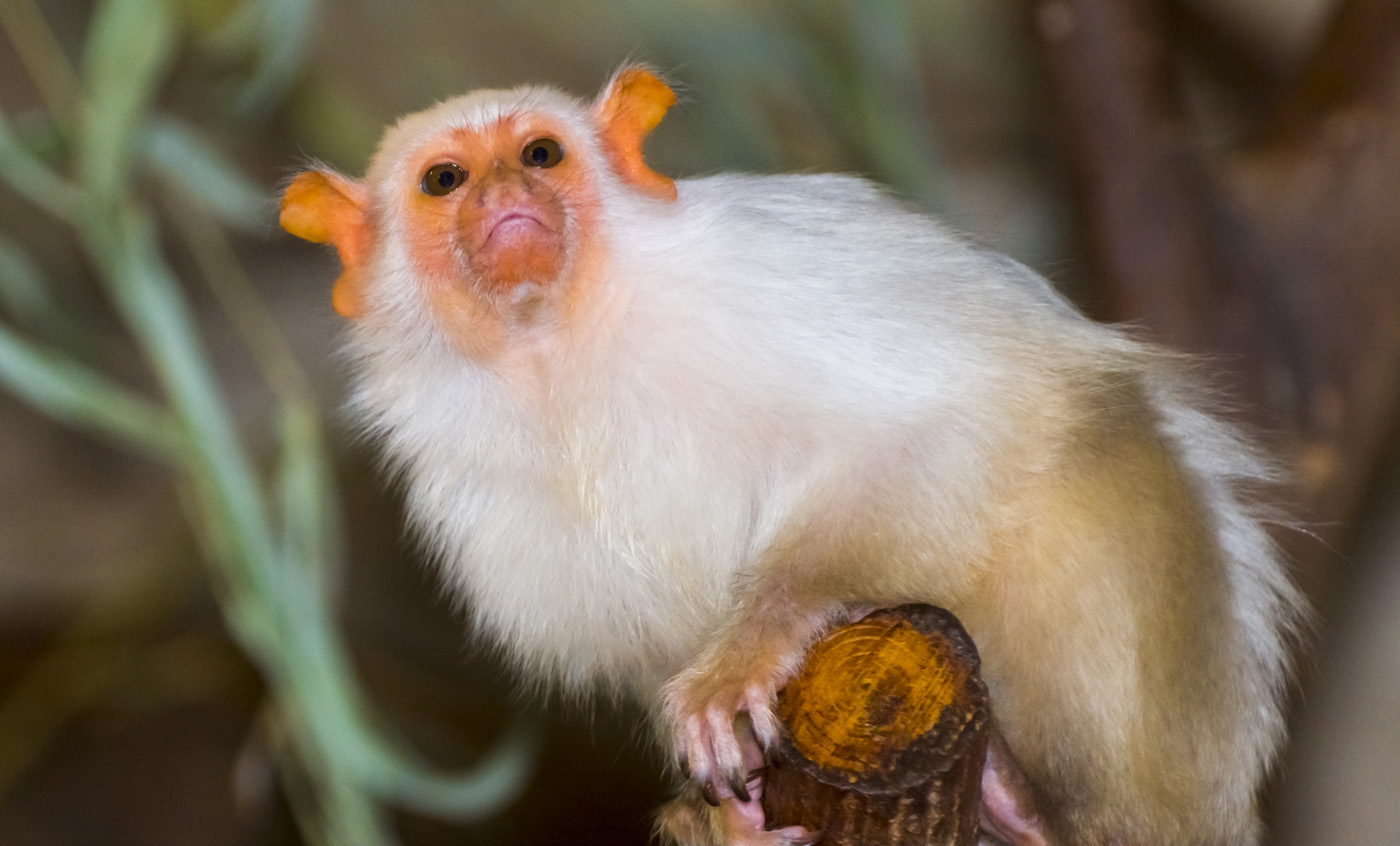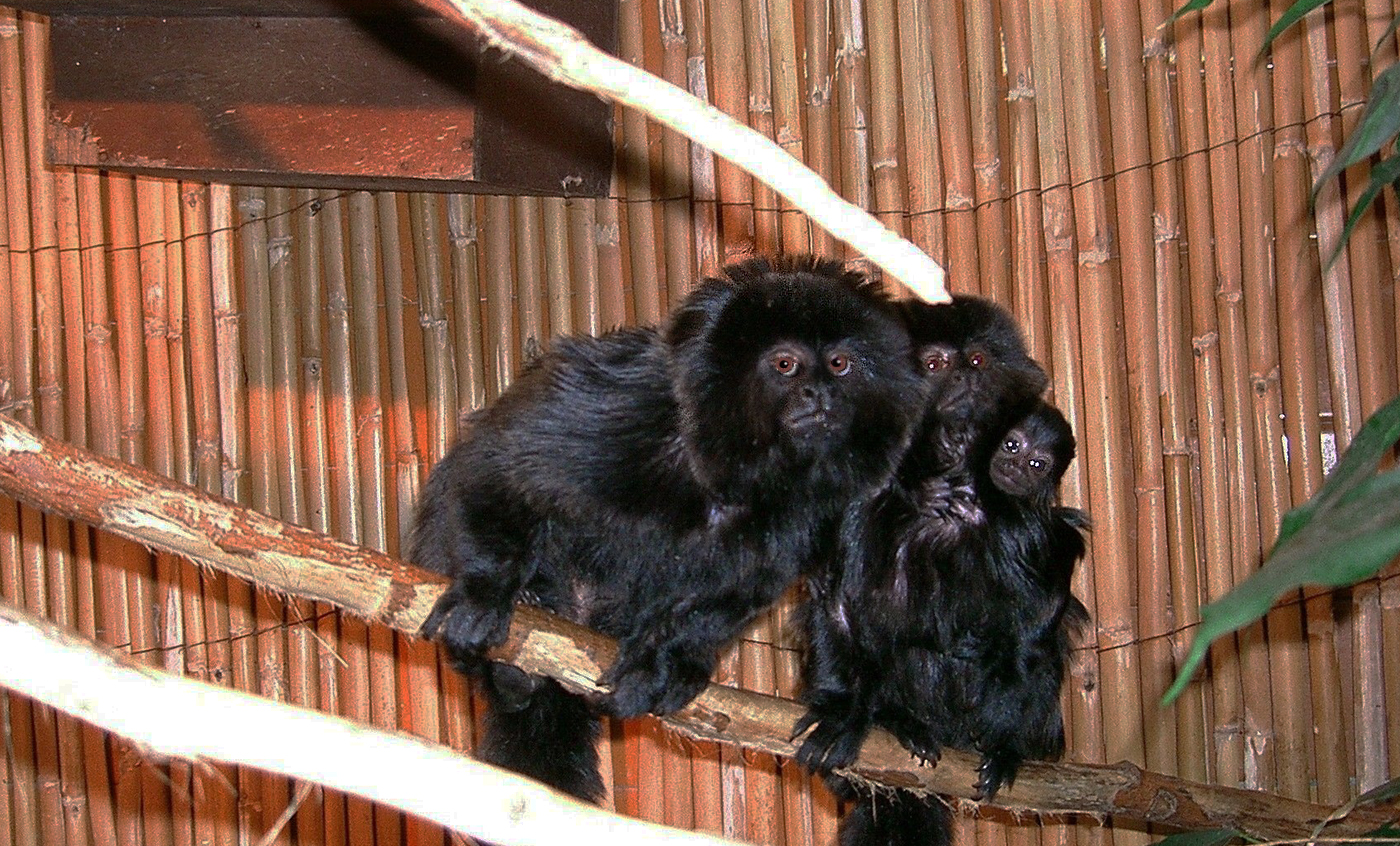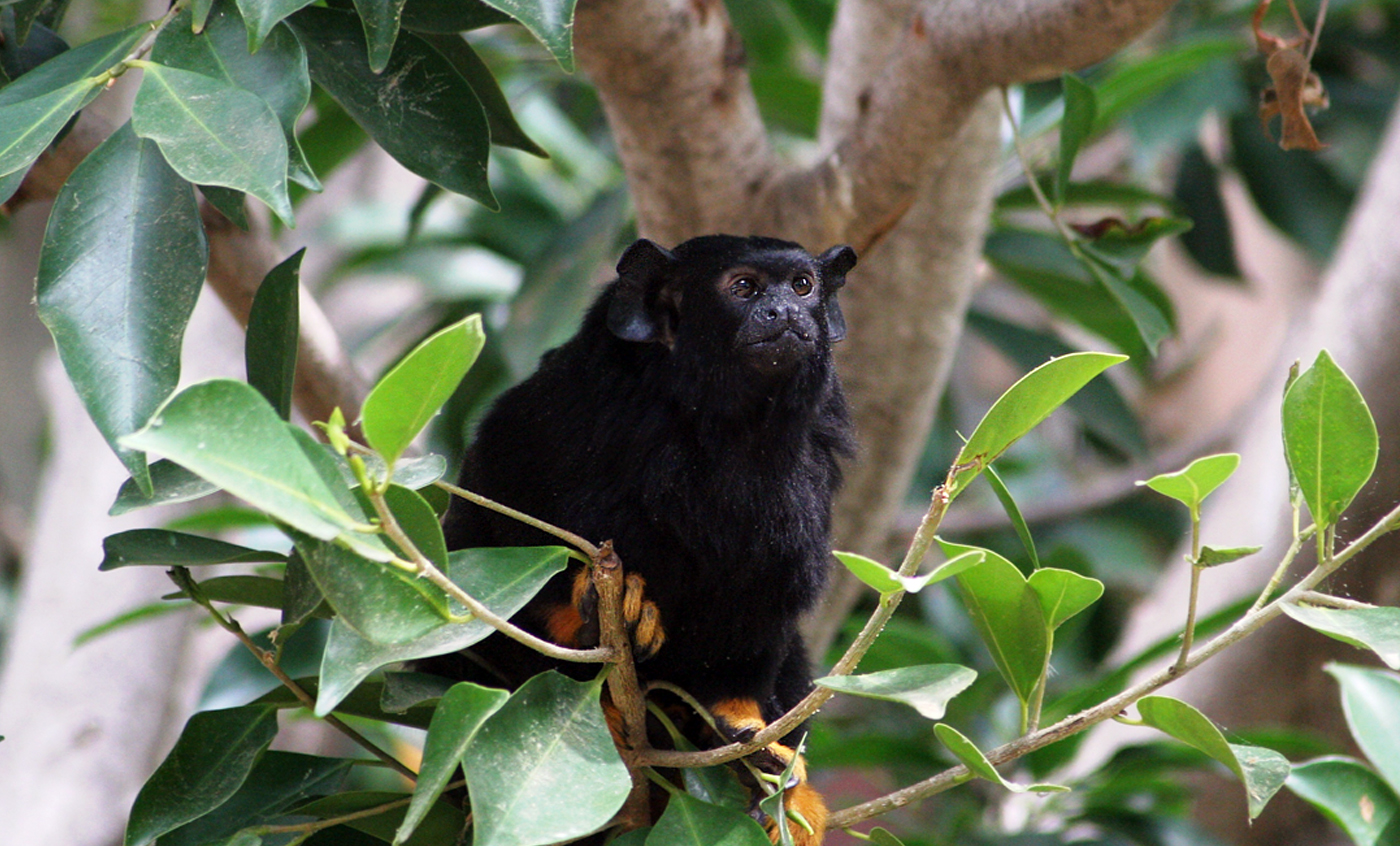Cotton-top tamarin
The cotton-top tamarin, named after its outstanding white-haired sagittal crest, inhabits the rainforests at the foot of the Andes mountains in north-western Colombia.
It forms small family groups that defend a territory and mainly feeds on fruits, insects and small vertebrates.
It is currently endangered due to the destruction of the forests it inhabits.
Breeding program
Natural habit
North-western Colombia
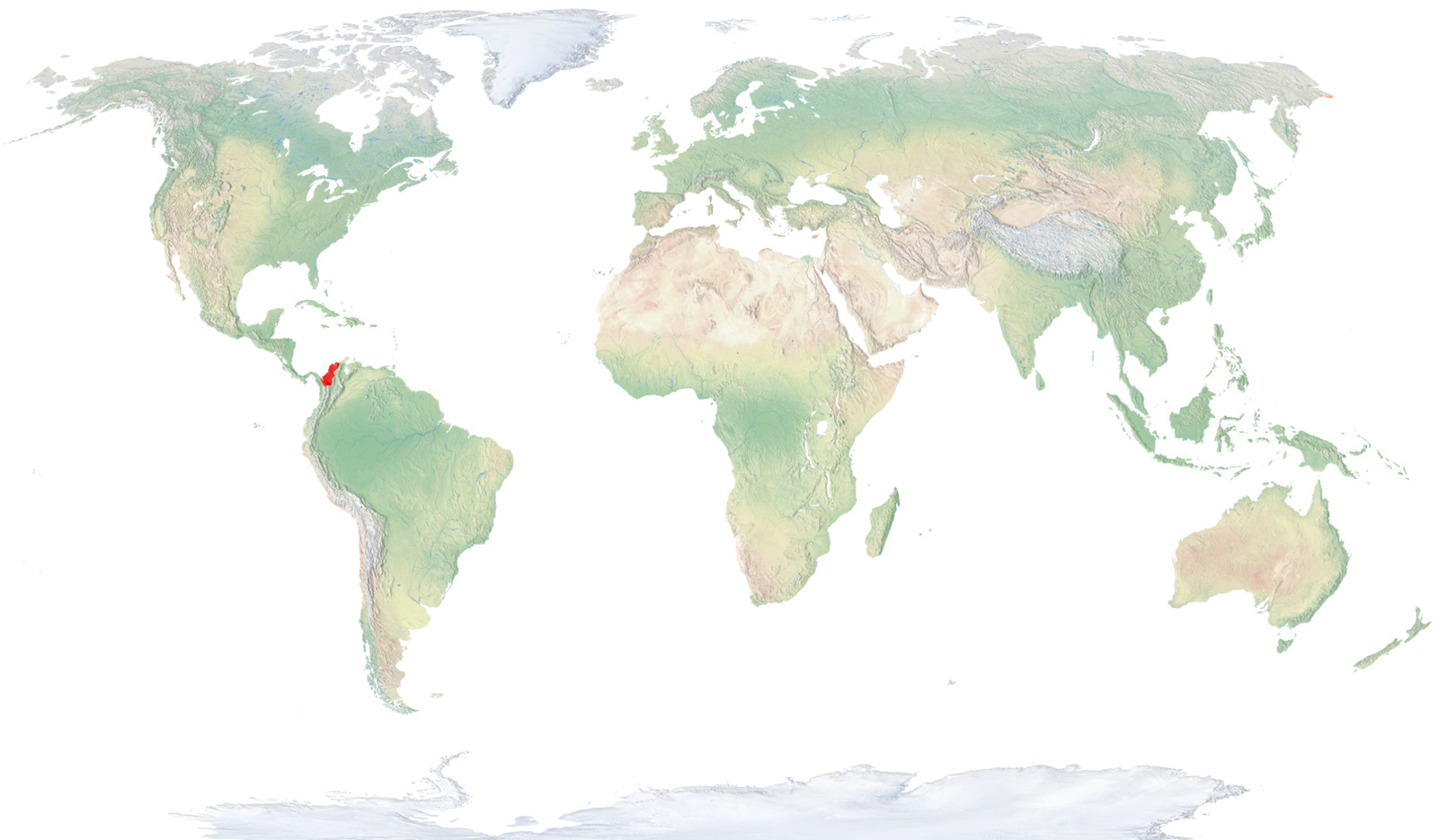
- Distribution / Resident
- Breeding
- Wintering
- Subspecies
Risk level
- Extint
- Extint in the wild
- Critically endangered
- In Danger
- Vulnerable
- Near threatened
- Minor concern
- Insufficient data
- Not evaluated
Taxonomy
Physical characteristics
Biology
Reproduction
Biology
The cotton-top tamarin is named after its outstanding white-haired sagittal crest extending from its forehead to its shoulders. Its underparts are white, while the back and the tail are orange.
Primary and secondary plain rainforests, often at the limit of forests.
It mainly feeds on fruit, nectar, leaves, tender sprouts, insects and small vertebrates.
Gestation, which lasts for six months approximately, is relatively long, compared to other callitrichids. Usually they give birth to twins, and less often to a single baby or up to three, which are carried by the father or other members of the group.
In general, only a female of the group reproduces during the mating season, as the rest of the females are inhibited by means of hormones.
It is a diurnal animal that lives in family groups of up to fifteen individuals, who defend the territory against other groups.
In the past the species was hunted to be used as pet animal or in biomedical research, but nowadays it is critically endangered, mainly because of the destruction of the forests it inhabits, which are occupied by crops and cattle pastures, and due to the subsequent fragmentation of the populations. The latest census carried out in Colombia estimate a population of no more than 6,000 animals.
The Zoo of Barcelona takes part in the EEP of this species.




